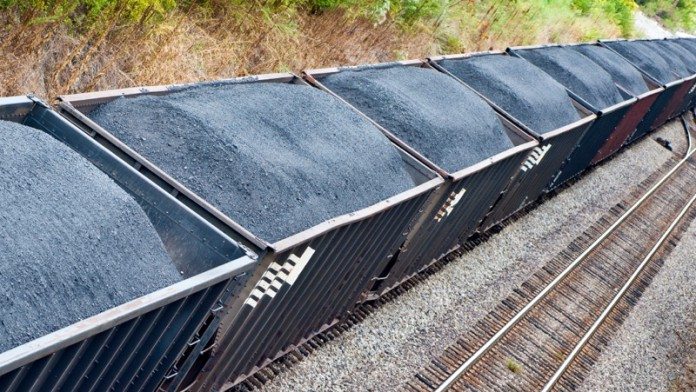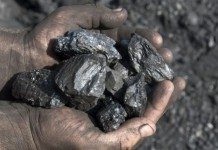
ASKED to clarify the pronunciation of his name, Vuslat Bayoglu responded: “Call me Vusi”, normally a short version of a common South African name. This was the amusing riposte to conference host Bernard Swanepoel’s tongue-in-cheek complaint about the Turk, now in his fifteenth year in South Africa’s coal mining industry.
Bayoglu’s first foray ended messily in court following a bust-up with an empowerment partner. His comeback is Canyon Coal, an eminently more successful effort that he puts down to the absence of new investment dollars from companies like Glencore.
“Back in the day, it was very hard to get new business as Glencore was the dominant player in South African coal,” said Bayoglu on the sidelines of the Junior Indaba, a conference set up by Swanepoel’s company in May. “The group [Glencore] is less involved now. It’s provided a lot of room to pick up assets that are available,” said Bayoglu.
The country’s coal sector is in an interesting space, partly because the majors are thinking carefully about their future strategies. It’s not exactly a case of ‘getting the hell out of Dodge [City]’, but it’s cautious of fresh investment. In the case of Anglo American, it is divesting from the coal sector. South32 is pressing ahead with resource extension projects, one of which is related to Eskom coal supply and, therefore, contractual whilst Exxaro Resources has announced plans to sell certain assets.
That has created opportunities. Scinta South Africa, a company in which Seriti Resources’ Sandile Zungu is invested through Zungu Investment Corporation or Zico, recently bought South32’s Davel coal prospect and Ermelo Mines for R187m.
“There’s about four million to five million tonnes of Eskom quality coal in the discards which we can deliver to Camden power station, which is linked by rail and is about 20km away,” said Charl Ferreira, an executive director of Zico Investments. “We have been discussing the purchase of the South32 assets for about seven years.”
The plan is to build a R2.5bn thermal coal mine at Davel. First, though, Scinta hopes to generate short-term cash flow by processing two discard dumps at Ermelo Mines, which also has a plant and infrastructure that will be eventually repurposed for Davel. It’s a nifty piece of entrepreneurism that is becoming typical of business activity in the sector.
For Bayoglu, the plan is to take Canyon’s production to as much as 10 million tonnes a year (Mtpy) from a current base of about 3.5Mtpa through the development of organic or brownfield projects of recently acquired assets and projects.
The largest of these is De Wittekrans, an 118Mt coal resource near Hendrina in Mpumalanga province. Bayoglu thinks it will have run-of-mine production of some 3.2Mtpy. The project was previously on the books of Continental Coal, a now-defunct company that was once listed in Sydney until it experienced cash flow problems amid a price correction for coal. First, though, Bayoglu has to replace tonnes at existing operations.
Most of Canyon Coal’s current production is split between its Singani (1.6Mtpy) and Phalanndwa (1.4Mtpy) operations. Of these, Singani and its third mine – Hakhano – are reaching the end of their economic lives, which is where assets like De Wittekrans come in.
Production from the mines is sold either domestically or into the export market – Bayoglu’s home country, Turkey, takes tonnes as does Pakistan – but none of the fuel is sold to Eskom of which Bayoglu is critical. “There isn’t anybody who isn’t captured in that organisation,” he says.
ONE of the assets Exxaro Resources was considering selling was Matla, a thermal coal mine contracted to sell some 10Mtpy of coal to Eskom’s Matla power station. As a cost plus mine, it is Eskom’s responsibility to pay for the extension of mineable resources. The fact it hasn’t yet – after promising to do so last year – is thought to be one of the reasons the Matla mine was temporarily put on to Exxaro’s non-core asset list. Others on this list include Arnot, the closed Eskom mine, and North Block Complex.
The fact of the matter is that the increasingly unpredictable business environment regarding Eskom is proving catalytic for the mid-size to junior coal mining space. The other is the redraft of the Mining Charter, which has scattered what little regulatory certainty there was in South African mining to the wind.
A potential buyer for Matla, had it to come on to the market, was Wescoal Holdings – a company that has emerged from the damaging executive row in 2015 with a new strategy focused on its 51% black-owned status. The fallout among executives, principally its founding CEO Andre Bojé, was exactly over the black economic ownership. Bojé wanted to sell the company to an international buyer who liked the potential Bojé had created in the business; Robinson Ramaite, Wescoal’s chairman, preferred entrenching the BEE ownership.
Whether Ramaite’s eventual victory in forcing Bojé out will be to the long-term benefit to Wescoal’s shareholders remains a moot point presently. So far, however, Wescoal has made good progress on a recovery, led by CEO Waheed Sulaiman.
By June, the company was wrapping up its R525m cash and share takeover of Keaton Energy, a transaction that takes Wescoal’s coal production immediately to 6Mtpy with potential to add about 2m more tonnes annually once it develops Moabsvelden, a long-standing project of Keaton’s.
Ultimately, however, Sulaiman hopes to have much larger fish to fry.
“The BEE deal injected new equity into the business and we believe it has really given us a competitive edge over our peers,” said Sulaiman. “From now, we think there can be a significant increase in the asset base and we have plenty of new options around business opportunities. It really positions us well for the next stage of growth.” Wescoal has targeted coal production of 10Mtpy as a medium-term target.
This would be achieved either through small or large transactions, although Sulaiman is cautious regarding taking on too much. “We would look at large transactions but we have to do it in a considered manner,” he said. “Exxaro is one of the things we’re looking at but we have to weigh it up against a deal we know we can do successfully. We need to know we can deliver; make promises we can keep.”
Sulaiman is bound to be pitched against Coal of Africa, led by the savvy and experienced campaigner, David Brown. As with Wescoal, Brown has articulated a growth strategy that is predicated on either small or large acquisitions, recognising in the South African coal industry a fluidity that will throw up opportunities of many stripes.
Whilst Wescoal was inking the Keaton deal, Brown was negotiating the purchase of Uitkomst, a colliery in KwaZulu-Natal province bought from Glencore by Pan African Resources. It was neat business by Cobus Loots, CEO of Pan African, to have bought Uitkomst as it was profit-making, but strategically shareholders didn’t seem overly keen on the asset since Pan African’s mandate was low-cost gold mining.
In selling Uitkomst for R275m, however, Loots pocketed for Pan African shareholders a R157m profit whilst handing CoAL cash flow deemed crucial to its own expansionary plans – the R2.5bn to R3bn Makhado thermal and metallurgical coal project in South Africa’s Limpopo province.
Makhado is a monster of an investment, especially given CoAL’s R1.3bn market valuation: a project that is scoped to produce 2.3Mtpy of coking coal and a further 2.3Mtpy of thermal product over a 16-year life of mine. So far, Brown has used equity in the project and company to raise support and most recently secured a R240m loan from the Industrial Development Corporation to assist with the early stage development of the project.
In terms of project scale, however, few measure up to Resource Generation’s (Resgen’s) Boikarabelo – a prospect also in the Limpopo province, but different to CoAL’s Makhado in that it’s part of the Waterberg coalfields, an area considered the next hub of South African coal production, especially as the riches of the Mpumalanga province are eventually exhausted. So far, only Exxaro Resources has invested substantially in the Waterberg, through its fantastically large Grootegeluk mine and expansion project. But Boikarabelo may well be the very next.
Raising capital for Boikarabelo has been a torturous process. First there was a management coup in which Resgen’s predominantly Australian executive were replaced by South Africans – a move made to align project management with the asset. Resgen had already been toiling with Boikarabelo, raising (and spending) just over R2bn on the project basics, overcoming some (but not all) of the regulatory hurdles, for about five years.
Under the leadership of Rob Lowe, a private equity specialist whose only previous with the coal industry had been on the level of investment manager, Resgen set about the task of pinning down the balance of the capital – a meaty R4bn worth of funds.
A club of lenders including Rand Merchant Bank, HSBC as well as the IDC and Public Investment Corporation, are ready to stump up the capital, but before the credit approval process could begin, there had to be 100% comfort with the setting down of contracts, as well as the business model. Thanks to an improvement in the thermal coal market – where prices appear to be settling between $70 to $75/t – Boikarabelo looks like it may become the next major investment in South Africa’s coal sector.
Lowe says saleable production will be about 6.5Mtpy but with potential to scale up significantly in a phase two development, possibly beyond 20Mtpy. As for coal destination… that would depend. Initially production from Boikarabelo was heading for Eskom, but there’s less certainty now given the ructions at the state-owned power utility.
Commenting in a shareholder update on May 4, Resgen chairman, Denis Gately, said discussions had been held with Eskom that had given Resgen confidence there were “solid grounds” to conclude a coal supply agreement (CSA), but he added: “Further discussions are currently on hold pending the outcome of internal inquiries taking place within Eskom unconnected with the negotiation of this supply agreement.” It wasn’t clear what was meant by “internal inquiries”.
“Eskom’s internal procedures are being held up while people are sent on leave and new people are being appointed,” says Lowe. “But we are not anticipating any issues with the National Treasury because the CSA is vanilla.”
“We are far advanced in relation to the Eskom CSA with the quantities, qualities, the power stations to which Eskom would like the coal delivered,” says Lowe. “We have also had a general discussion on pricing pending these inquiries. But the impact on us is that decisions are not being made which is frustrating as we just want to get the mine built.”











